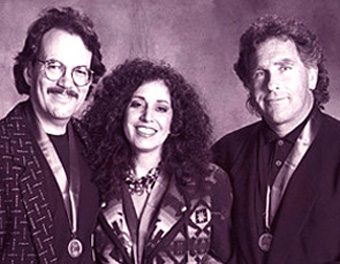Phil Galdston, Wendy Waldman & Jon Lind: Writing The Classic Hit Song “Save The Best For Last” For Vanessa Williams

Phil Galdston, Wendy Waldman and Jon Lind are veteran songwriters who have written many hit songs over the past two decades, for artists such as Madonna, Celine Dion and Earth Wind & Fire. They’ve enjoyed success writing songs by themselves, and with different collaborators. However, they came together a decade ago to write one of the most memorable hit songs of the early ’90s, “Save The Best For Last,” for Vanessa Williams.
“Save The Best For Last” remains the biggest hit of Vanessa Williams’ career, reaching #1 on the Billboard “Hot 100” singles chart in March 1992, and staying #1 for five weeks. It won the ASCAP “Song Of The Year” Award for being the most performed song of 1992, and it was nominated for “Song Of The Year” at the Grammy Awards.
Galdston, Waldman and Lind recently recalled how “Save The Best For Last” was originally conceived and written, how the demo was recorded, and how the song was placed with Vanessa Williams.
“It was in March 1989, that Jon [Lind] and I began writing the song at a friend’s apartment in Los Angeles,” said Galdston, who lives in New York. “I was on a keyboard, and I started playing the main theme. Jon liked what he heard, so he began singing and developing the melody. We quickly had the essence of the song musically, and during a break, I came up with the title, ‘Save The Best For Last.’ Then we asked, ‘How should we get this lyric written?’ We decided that I should ask Wendy [Waldman] to write the lyric with me. The following month, I played the work tape for Wendy during my trip to Nashville (where Waldman lived at the time).
|
“Phil came down to write with me that weekend,” recalled Waldman. “He played me the track of ‘Save The Best For Last,’ and I thought the music was beautiful. Initially, I didn’t understand the title, because the original lyric idea they had was kind of bitter and ironic. I said, ‘This is so dark; I thought you guys meant it to be a positive song. So we agreed to change the lyric concept, making it positive. We came up with some unique lines: ‘Sometimes the snow comes down in June, sometimes the sun goes ’round the moon.'”
When Waldman & Galdston finished the lyric, they sent the writing tape back to Lind in Los Angeles. Lind loved what he heard. The following month, all three writers were in Los Angeles to record the demo. Lind and Galdston kept the demo production simple, recording just electric piano, bass synth, synth strings, shaker and vocal (sung by Waldman).
“Wendy sang the demo beautifully,” explained Lind. “Because she co-wrote the lyrics, she was able to bring a special authenticity to the demo vocal performance. I love it when Wendy sings the demos on the songs the three of us write together. Her vocal is the final part of our unique, collaborative process. Phil and I write the melody and music, Wendy and Phil then write the lyric, then Wendy sings the demo. It creates a mysterious balance, which has worked really well for us.”
With the demo completed, the trio subsequently pitched “Save The Best For Last” to three, high-profile artists. Yet surprisingly, each of these artists passed on the song. But then the trio learned that John Anderson (a publishing exec with Windswept Pacific Music, which co-published Waldman) had played the demo for Ed Eckstine (President of Mercury Records) and Eckstine loved the song. He immediately played it for his artist, Vanessa Williams, who deeply loved “Save The Best For Last,” and believed it could be a career hit for her.
Eckstine selected Keith Thomas to produce “Save The Best For Last,” and the three writers were thrilled with the result. “The record came out gorgeous; it was glorious,” said Waldman. “My eyes glazed over when I first heard it. I was so pleased, I didn’t know what to make of it.”
Galdston added, “For us to hear the song so beautifully interpreted, it was a magical experience. The special thing that happened, was that there was no compromise in the writing of the song, and in the execution/recording of the record. We all remain intensely proud that it was successful on its own terms.”
- Singer/Songwriter Michael Marcagi Talks About His Excellent New EP, Midwest Kid, His New Songs And His Tour - April 18, 2025
- Lindsay Jordan’s “Say Anything” Named April “Best Song Of The Month” - April 8, 2025
- Ryland James, Canadian Singer/Songwriter With A Powerful Voice, Talks About His New Singles “Thank The Rain” And “The Reason” - March 17, 2025


